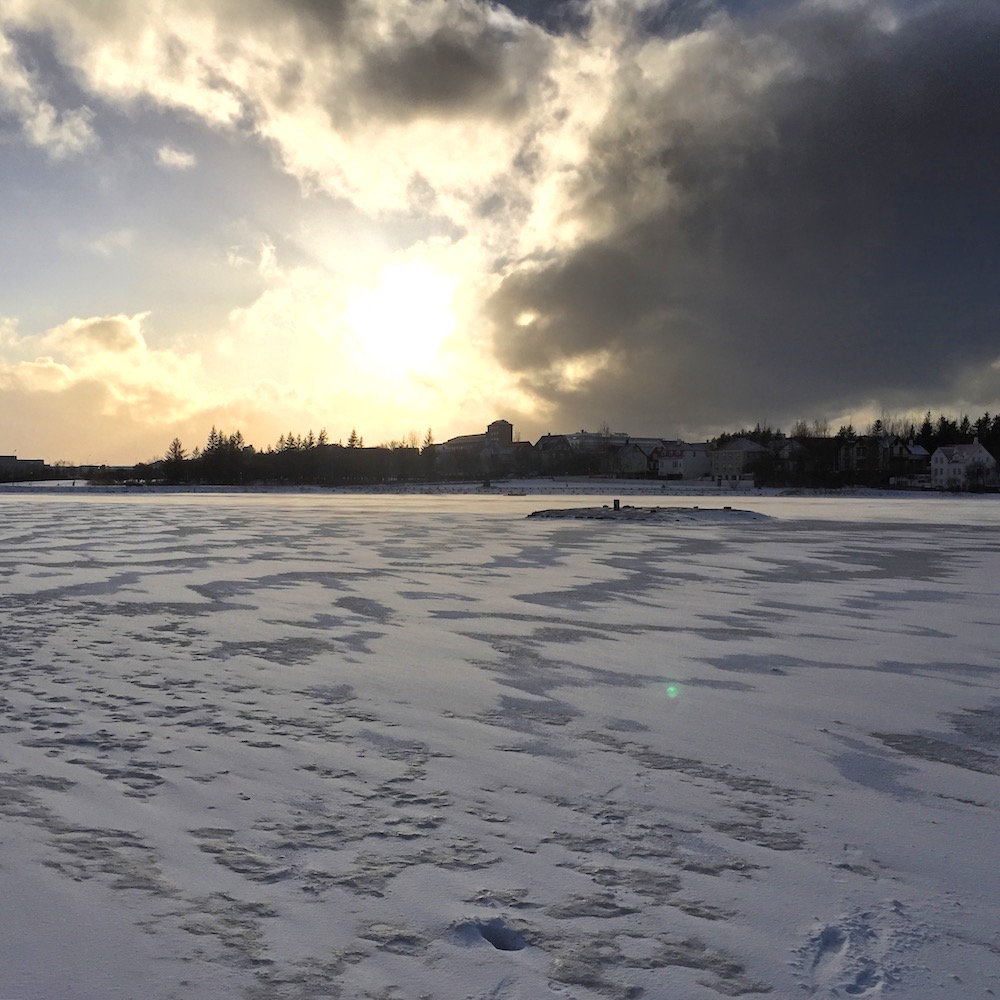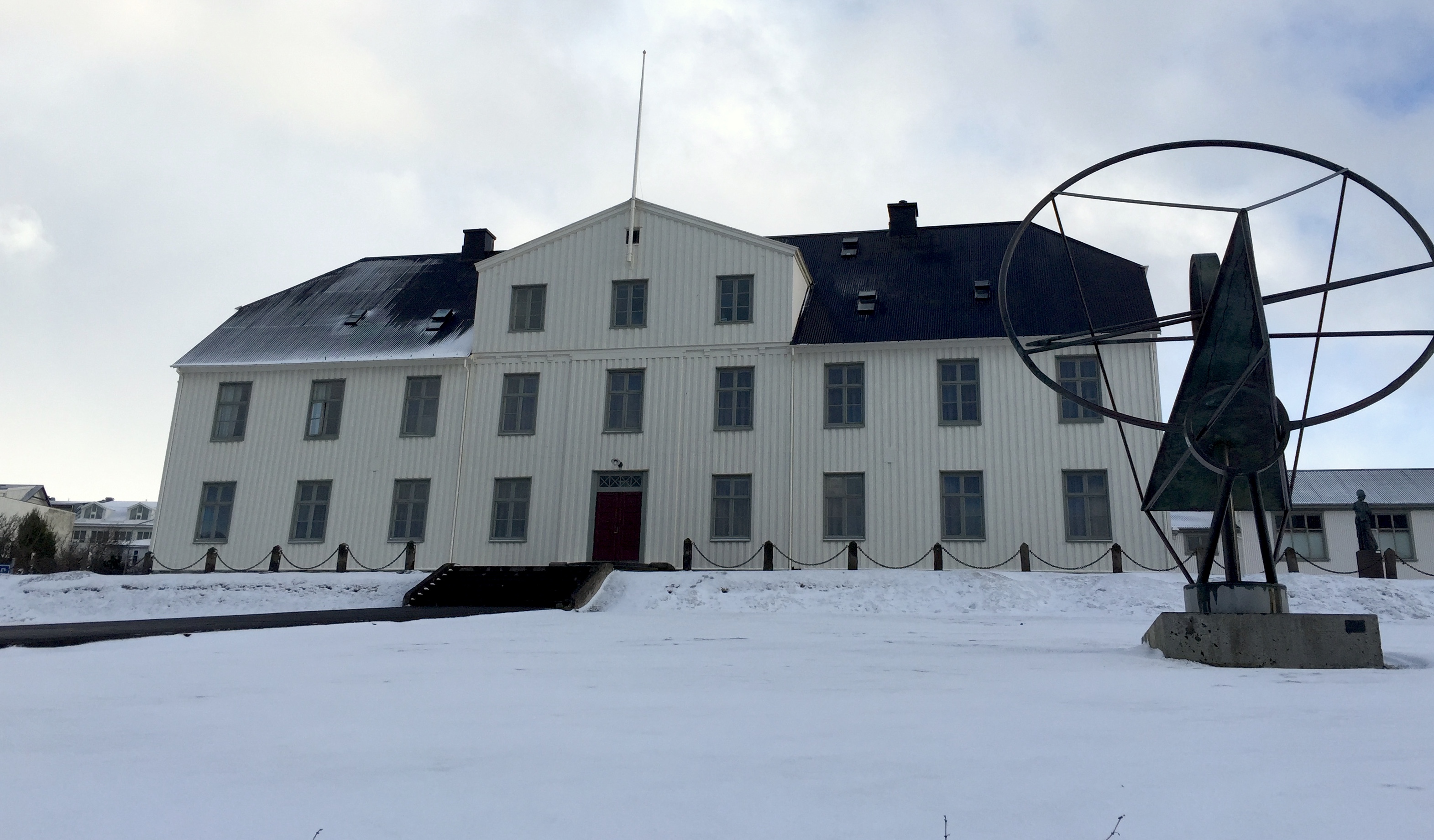Welcome to Iceland, where rain, snow and hail falls horizontally, where gales shred umbrellas and the cold really does hurt.
In Iceland we experienced foul weather at its foulest, wind so strong that we could barely stand up in it and cold so perishing during a tour of the Golden Circle that I would’ve got frostbite if it weren’t for some chunky skiing mits. Perhaps February was not the best time to visit…

The hail and snow arrived with a gusty storm the moment our BA Embraer 190 from London City touched down at Keflavik Airport, whipping across the flat landscape and making our little aircraft rock around the stand. But at least the storm had passed by the time we finally got to the end of the car hire queue and picked up our modest Hyundai.
Iceland in winter is bleak, at least on a drab, cloudy day. Between the airport and Reykjavik the land is marked by turbulent lava flows and there are few hills or trees. It’s brown and the few settlements south of the capital aren’t pretty. Much is functional, which is perhaps not surprising considering the conditions locals have to endure during the winter months.
Reykjavik isn’t exactly an architectural wonder either. There are some fine late 19th and early 20th century cottages and mansions, civic buildings and chapels, and a few fantastic modern structures including the Harpa Concert Hall. However, there are plenty of characterless boxes, such as the hotel we called home – the Skuggi -and there was a huge amount of building work going on in the city during our stay in response to the boom in tourism.

The Skuggi was just yards from Reykjavik’s main shopping street, Laugaveger. Partly pedestrianised, it’s modest but then this is a capital city of just 123,000 people. It does boast some fancy design shops bursting with chunky woollens and a number of decent bars and restaurants. Many of the shops are local rather than branches of the international chains. We popped in and out a few of them, gasped at the prices and worked our way down to the heart of the old town, which has some characterful buildings, the gloomy stone of Parliament and charming wooden cottages. We knew we’d arrived when we found ourselves at Tjörnin, a small lake that freezes in winter. A wealth of birdlife hovered, depositing copious amounts of shit on the snow as swarms of tourists took photos. We trudged through the sludge to a nearby craft beer bar and warmed up.
Reykjavik is alleged to have a wild nightlife at weekends but we didn’t get to experience it. On our first evening in town (a Thursday) we had a bite to eat in a restaurant and bar on Hverfisgata called Mat, which served some excellent small plates and a delicious Einstök pale ale. We left to find more bars but none were open beyond 11pm on a Thursday night so we slunk back to our hotel and managed a quick pint before it shut.

The next evening we dined on excellent local fare at Old Iceland but the weather was so dreadful, the wind so fierce and the rain so heavy that staying out in it was impossible. We rushed back to our hotel just a few hundred yards away and joined plenty of other guests who’d taken refuge in the bar. I tucked into the pale ale, a delicious rhubarb liquor from the Reykjavik Distillery and threw my broken umbrella in the bin. Come Saturday night, after our Golden Circle tour, I was too stricken with a bug to leave my bed so food and bars were the last things on my mind.
Being such a small city there isn’t a massive amount to do as a tourist, but on our one full day in town we explored the back streets via snow-covered pavements and admired the extraordinary street art that has brought so much colour to the streets. Some of it is world class and it was a real treat turning a corner and discovering another marvellous work in front of us.

It was easy to spot the city’s largest church, Hallgrímskirkja. Designed in the 1930s and finally completed in the 1980s, it’s a bizarre affair with curtain-like wings that make it look like a deformed space shuttle about to launch. However, State Architect Guðjón Samúelsson was said to have been inspired by elements of the Icelandic landscape. The exterior is unforgettable, the interior is modest in comparison but with plenty of mid-century touches and a majestic organ. There was a huge queue to go up the spire, mostly made up of the zillions of far-eastern tourists who’d arrived in Iceland to see the sights, so we moved on.
We walked down to the old harbour, which is crowded with touristy shops, fish restaurants and whale-watching kiosks. But it’s still a working harbour, with trawlers and coastguard vessels, rather than a ghastly Disneyesque recreation designed solely to satisfy the needs of us holidaymakers.

The museums of Reykjavik were the focus of our day, partly because the weather was deteriorating. The Settlement Exhibition in the heart of the old town is built around the remains of an old Viking longhouse, now well below modern ground level and dating from about 950. The earliest discovery on the site is an old wall dating from around 871. Nobody has yet found proof of anyone being in Iceland before this time.
The exhibition is very well done, mostly as a result of the multimedia displays that circle the room and surround the old longhouse. These tell the story of its building, the history of the area and the people who inhabited it. Museums elsewhere could learn a lot from it.
Not too far away, just beyond the lake, is the National Museum of Iceland but getting to it in driving sleet and snow wasn’t much fun and I’d recommend moving it to a more central position in town! We dried out over lunch then focused on the ‘Making of a Nation’ exhibit, which covers a lot of ground over its two floors. There’s a lot to take in and much to see but I learnt a lot about this curious country, and that’s what museums are all about.

On our last day in town we went from ancient to modern, driving the few yards to the Harpa Concert Hall because of the lashing wind and gales ripping off the sea. Designed by Henning Larsen Architects and artist Olafur Eliasson, it opened in 2011 on the edge of the harbour and is notable for its geometric features and glass panels. We wandered around inside, admiring the angles and stopping for lunch, then went for a quick walk around the Reykjavik Flea Market, which featured a range of stalls selling everything from tacky souvenirs to hand-made local jewellery.
We drove back to Keflavik Airport in terrible weather, the car being pulled and pushed this way and that by the wind on Iceland’s dreadful roads. Not surprisingly there were long flight delays and cancellations and it was with a degree of dread that I boarded our flight back to London City – one of just a few flights that were on time. Despite a few bumps on the way up, we made it back without incident!
Thanks to illness and weather we’d not seen the best of Reykjavik and neither had we had the chance to take a dip in one of the country’s famous mineral lagoons. We’d eaten well and enjoyed the Golden Circle, I liked the friendly locals and their excellent beers, and we have reasons to return….

